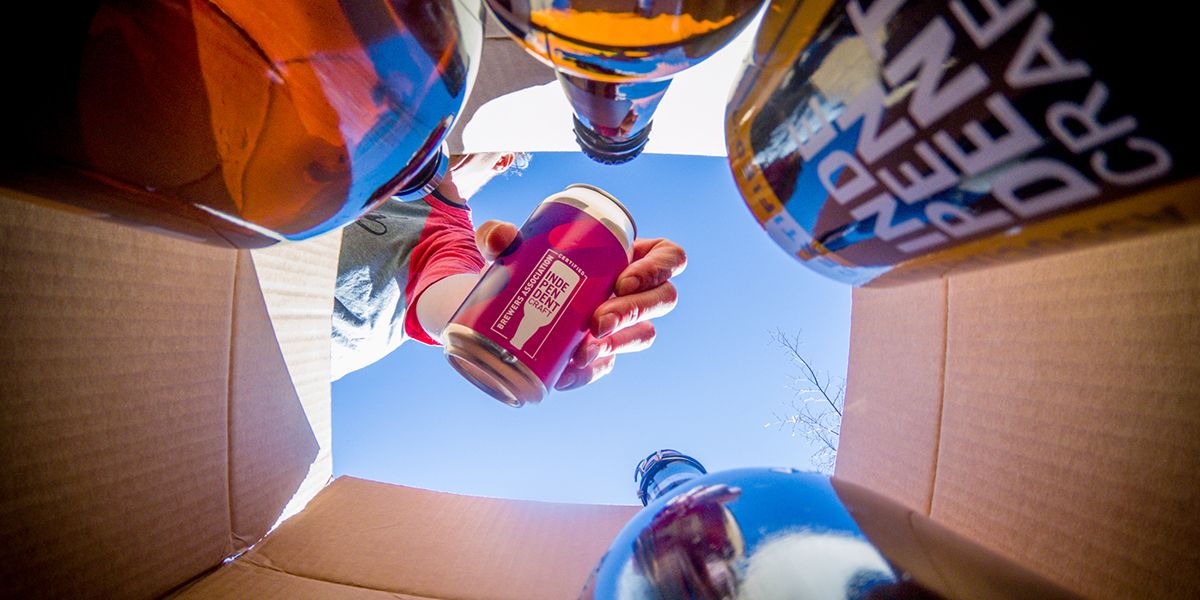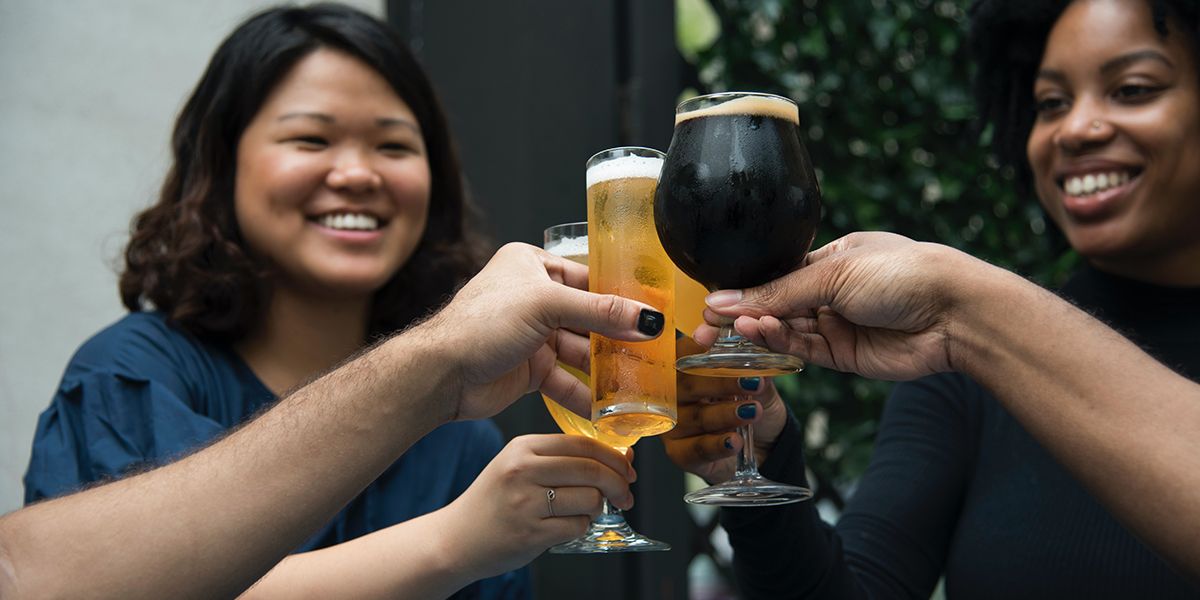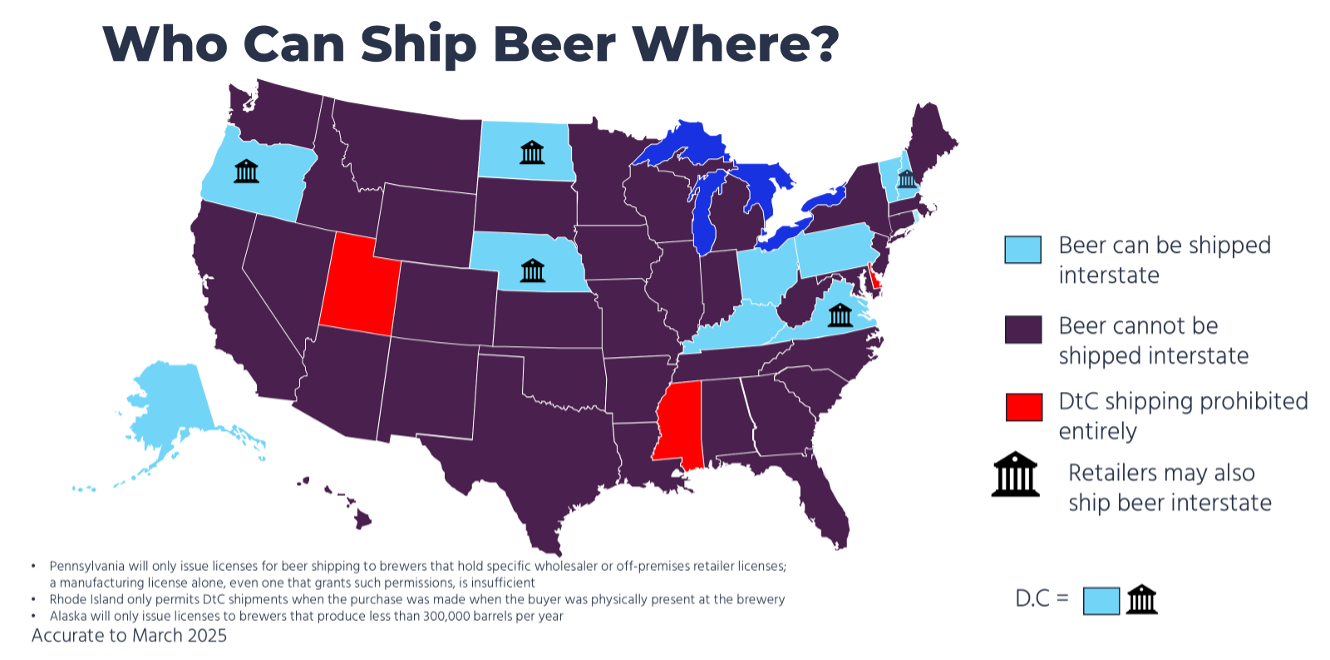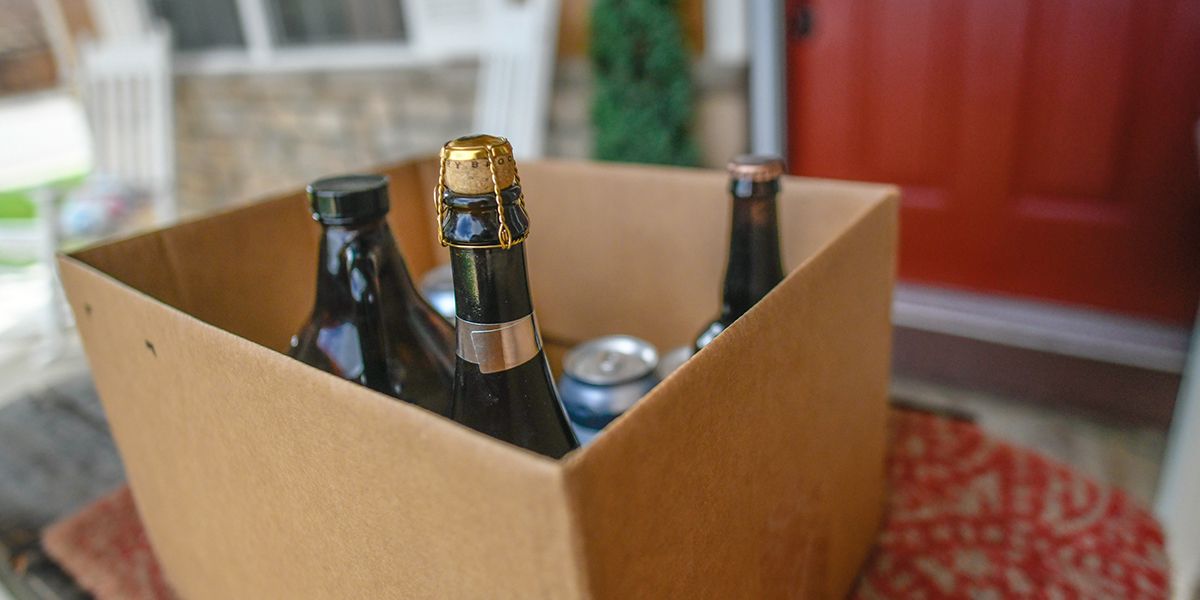The Case for DtC Beer Shipping
The wine industry has been shipping direct-to-consumer (DtC) for 20 years, and this once-novel market expansion has proven win-win-win for producers (business growth), states (increased tax revenue) and consumers (increased choice) alike. And yet, beer DtC remains a much narrower market. Why?
Beer producers aren’t the only ones asking that question. Sovos ShipCompliant’s 2025 Direct-to-Consumer Beer Shipping Report found that more than four in five regular craft beer drinkers (83%) say that current beer shipping laws in the U.S. should be updated to make it legal in more states—as do 64% of all Americans age 21+.

Lessons from 20 years of DtC wine shipping
DtC wine shipping is a nearly $4 billion market as of 2024. Because DtC shipping and three-tier distribution complement one another, the three-tier system has continued to thrive in its central role in alcohol distribution even as the DtC channel has grown. In fact, while DtC wine shipping has been in place for two decades, it makes up 8% of total off-premise wine sales in the U.S. (as estimated by Jon Moramarco, managing partner at bw166).
The success the DtC wine channel has found has gone hand in hand with shippers’ commitment to following state regulations and tax requirements. DtC wine shippers participate in a safe, well-regulated market, complying with varying state regulations that include:
- Getting properly licensed by the destination state;
- Abiding by regulatory rulings of the destination state;
- Conducting age checks and preventing sales to minors; and
- Correctly determining, paying and reporting on taxes owed to the states.
Additionally, shippers abide by destination states’ jurisdiction in terms of other producer-enablement rules that include customer volume limits, the registration of brand labels and brand ownership requirements.

Distinct product offerings
The products that reach consumers through the DtC wine shipping channel are not the same ones they are shopping for at their local retail outlets. Rather, wineries typically offer special allocations or other higher-end, more limited offerings direct-to-consumer.
Similarly, beer lovers are not necessarily looking to ship products that can be easily found at local retail stores. However, breweries can offer highly allocated and limited run products that consumers would otherwise have difficulty gaining access to.
Thus, there is generally no direct competition between the products available through these different channels — though a producer that grows its fan base via DtC shipping can expect to see increased demand for their products sold through the three-tier system. In fact, the DtC beer shipping report found that 95% of regular craft beer drinkers who are likely to purchase craft beer via DtC shipping say they’d be likely to look at retail for brands enjoyed via the DtC channel.
An equitable marketplace?
Across the vast majority of the U.S. — 47 states and the District of Columbia — DtC wine shipping is permitted. The map of where beer producers are legally entitled to ship DtC is much, much narrower.

* Pennsylvania will only issue licenses for beer shipping to brewers that hold specific wholesaler or off-premises retailer licenses; a manufacturing license alone, even one that grants such permissions, is insufficient.
Only 12 locales are open for DtC beer shipping, compared to wine’s 48:

As beer producers have demonstrated through their compliant participation in the three-tier system, they are readily equipped to mimic the conforming behaviors of their winery counterparts in the DtC shipping channel.

How states have benefited from DtC shipping
Naturally, states are eager to maximize the tax revenues they collect, as taxes fund their service to the public, including infrastructure, education and social services.
The compliant actions of DtC alcohol shippers to date has enriched states’ coffers to the benefit of many. As a leading beverage alcohol compliance solutions provider, Sovos ShipCompliant has facilitated states’ securing hundreds of millions in tax revenue each year. Because the footprint for legal DtC shipping of non-wine beverage alcohol is limited, the vast majority of this tax revenue is driven by DtC wine shipments.
DtC Tax Revenue Paid to States via Sovos ShipCompliant
| 2017 | $88.6 million |
| 2018 | $101.4 million |
| 2019 | $117.8 million |
| 2020 | $149.7 million |
| 2021 | $172.8 million |
| 2022 | $180.1 million |
| 2023 | $177.4 million |
| 2024 | $171.6 million |
| Total 2017-2024 | $1.16 billion |
States opening to the DtC shipment of beer would only grow these welcome additional revenues.
In conclusion
The case for beer DtC shipping is clear. The demand is strong from producers and consumers alike, and states stand to benefit greatly. Some 20 years of well-regulated DtC wine shipping have paved the way for the healthy expansion of DtC beverage alcohol shipping.
Beer producers simply want the same kind of DtC market access that wine shippers enjoy. The data shows that DtC wine shipping is profitable for states and can be done safely. Consumers are ready for more choice and are already utilizing the DtC market. The time for expanded DtC beer shipping permissions is now.

Learn how Sovos ShipCompliant can help you manage your taxes and compliance for DtC shipping.
Talk to an expertSubscribe to our Newsletter
Get monthly updates on Sovos ShipCompliant resources, data reports, fresh resources and more.
Subscribe now